
Max-Planck Institut für extraterrestrische Physik
Giessenbachstr, 85748 Garching, Germany
phone: +49 89 300003277
email: srabien@mpe.mpg.de
 |
Dr. Sebastian Rabien Max-Planck Institut für extraterrestrische Physik Giessenbachstr, 85748 Garching, Germany phone: +49 89 300003277 email: srabien@mpe.mpg.de |
|
Flexible Membrane
Mirrors for Large Space Telescopes
We have developed a new way to produce and shape large, high-quality mirrors that are much thinner than the primary mirrors previously used for telescopes deployed in space. The resulting mirrors are flexible enough to be rolled up and stored compactly inside a launch vehicle. Our new approach to produce and shape the telescope mirrors- which is very different from typical mirror production and polishing procedures - could help solve weight and packaging issues for space based telescopes, enabling much larger, and thus more sensitive, We have successfully fabricated parabolic membrane mirror prototypes up to 30 cm in diameter. These mirrors, which could be scaled up to the sizes needed in space telescopes, were created by using a chemical vapor deposition process to grow membrane mirrors on a rotating liquid inside a vacuum chamber. As we aim for optically quality reflecting surfaces, an enabling technology is the adaptive shaping of the primary mirror. We have developed a new method that uses a light radiating method to adaptively correct imperfections that might occur after the mirror is unfolded. This adaptive shaping of the surface is a new way to tune surfaces to the desired optical shape in space, or other applications. This method basically adds no weight to the system as a spatially controlled illumination acts as adaptive optics active elements. With this method we are turning the extremely thin membrane primary mirror into an adaptively controlled surface with a million of active elements. Current tests, utilizing the prototype membrane have shown a surface control down to 15nm RMS, which brings us into the range of short wavelength visible light diffraction limited telescopes. The publication at Applied Optics by S. Rabien, “Adaptive Parabolic Membrane Mirrors for Large Deployable Space Telescopes,” Applied Optics, vol. 62, issue 11, pp. 2836-2844 (2023).can be found here: Membrane Mirror Publication The Optica Press release is found here: Optica Press Release The MPE Press release is here: MPE Membrane Mirror Press release SPIE 2024, SpaceTelescopes and Instrumentation Membrane space telescope: active surface control with radiative adaptive optics SPIE Conference publication |
 Artists impression of an array of membrane space telescopes in orbit. |
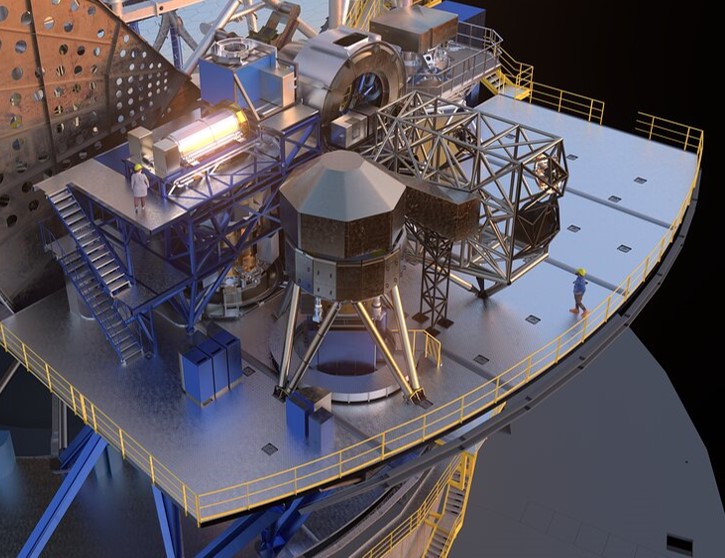 |
MICADO
the first light imaging
and spectroscopy instrument for the European Extremely Large Telescope.
MICADO
at the ELT will reach a point source sensitivity comparable to
JWST, between the OH lines, at
a spatial resolution about a factor six higher. MICADO will operate
with the
laser guide star multi conjucated adaptive optics system MAORY and a
single conjugated natural guide star adaptive optics.
|
|
The ARGOS project at
the Large Binocular Telescope
The ARGOS project has equipped the Large Binocular Telescope (LBT) in Arizona with a multi laser guide star and adaptive optics facility. It has been designed, built and commissioned by an international consortium assembled out of Institutes from Italy, the United States and Germany, led by MPE and me as principal investigator (PI). ARGOS launches a constellation of six laser guide stars, three above each of LBT's primary mirrors. Detecting the 'Rayleigh' laser guide stars with a gated wavefront sensor, enables us to correct the atmospheric distortions over a wide field of view. Each of the LUCI imagers and spectrographs can thus be fed with sharpened images, allowing a strongly enhanced performance. To the right the LBT can be seen with the ARGOS lasers in operation. More information can be found at: The MPE ARGOS webpages and the ARGOS publication at A&A with our image on the issue title page. |
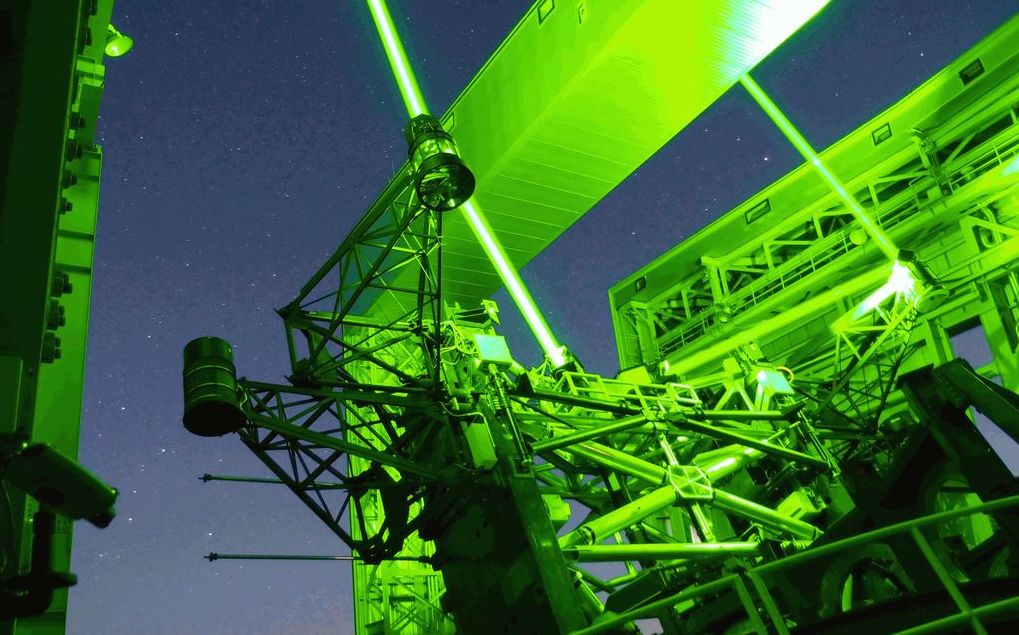 |
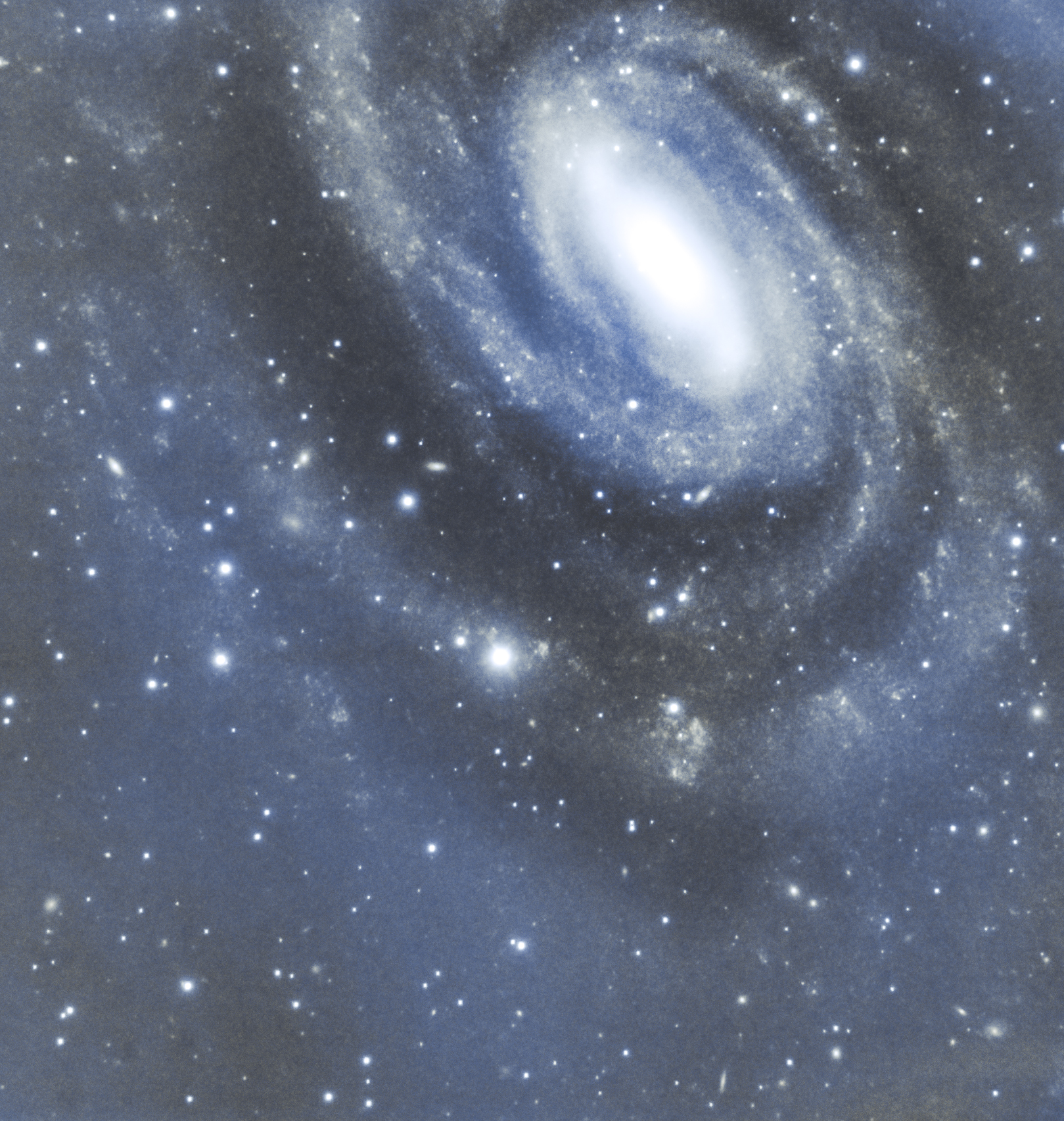 |
First Images with
ARGOS
To the left a J, H-band composition image of NGC 6384 is shown, taken with laser guide star ground layer adaptive optics correction. The resolution in H-band amounts to ~0.22 arcsec close to the central TT star, and is fairly homogenic over the full field of view. With ARGOS coming online, astronomical observations at LBT can be conducted much faster due to the enhanced image sharpness. |
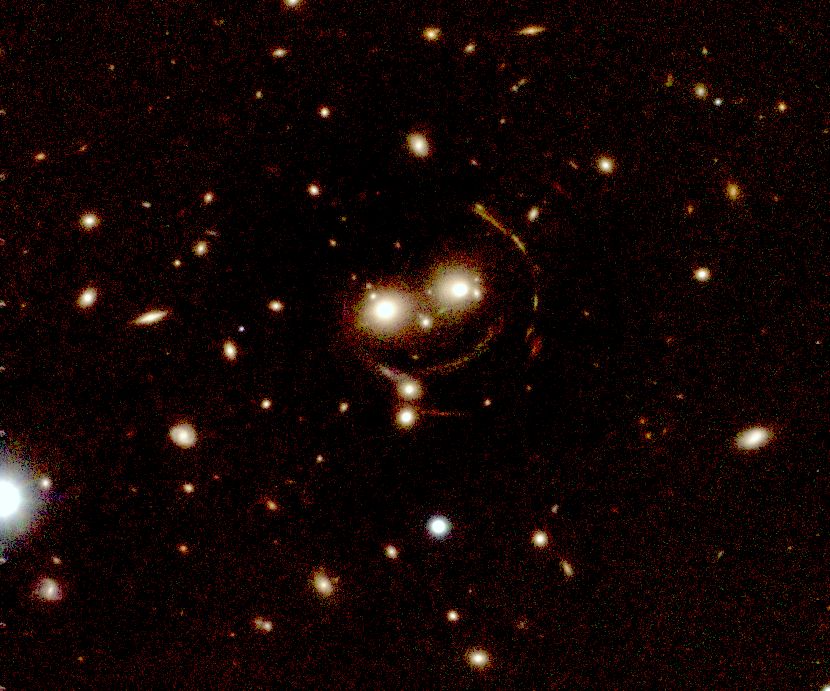 |
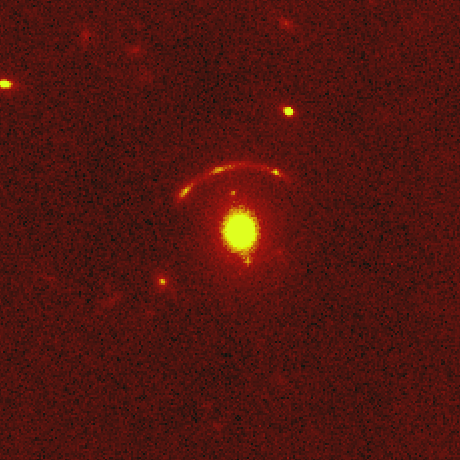 |
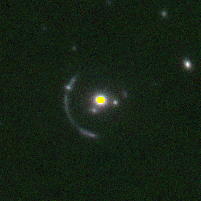 |
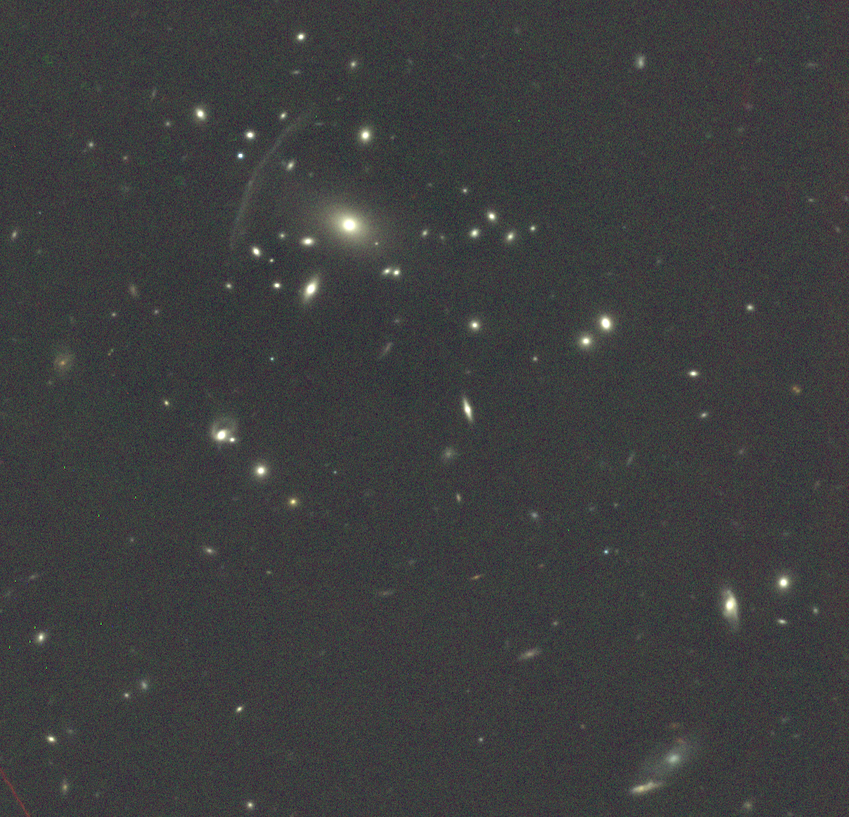 |
|
| SDSSJ1038 (JHK Composite) | The '8 o' clock arc' (K-Band) | The 'clone' (JHK Composite) | SDSSJ134332 (JH) |
|
First Light Image
with
ARGOS
In late 2014 we have been able to close the adaptive optics loop for the first time on the laser guide stars. First ever an 8.4m telecope has been corrected with a laser based GLAO adaptive optics system. The spatial resolution increase from seeing limited to corrected amounts to 2-3, well in agreement with the calculated expectations. Applying this factor to multi object spectroscopy of high distant objects in the universe, will allow these observations to be carried out at LBT in a fraction of time as required nowadays. |
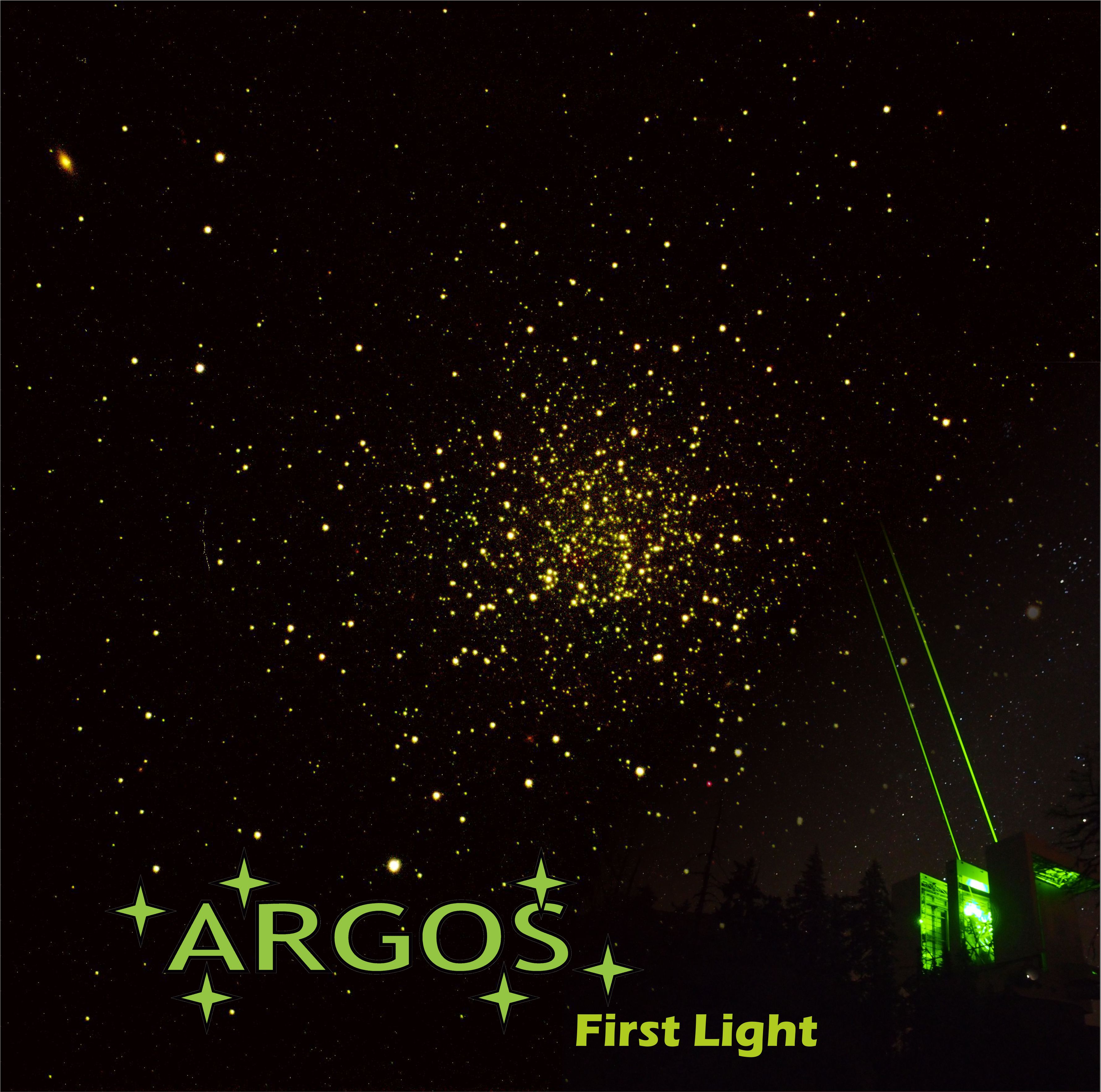 |
|
Technology Development: Cryogenic Magnetically Coupled Gear Driving mechanisms under cryogenic conditions are a particular challenging task. With no lubricants available at the low temperatures, gears are difficult to implement. We have developed a novel magnetically coupled worm gear drive that can solve for those challenges: the non-contact coupling avoids friction and wear with providing a high resolution precision positioning. The patented gear system will be driving the focal plane mechanism in the MICADO instrument. |
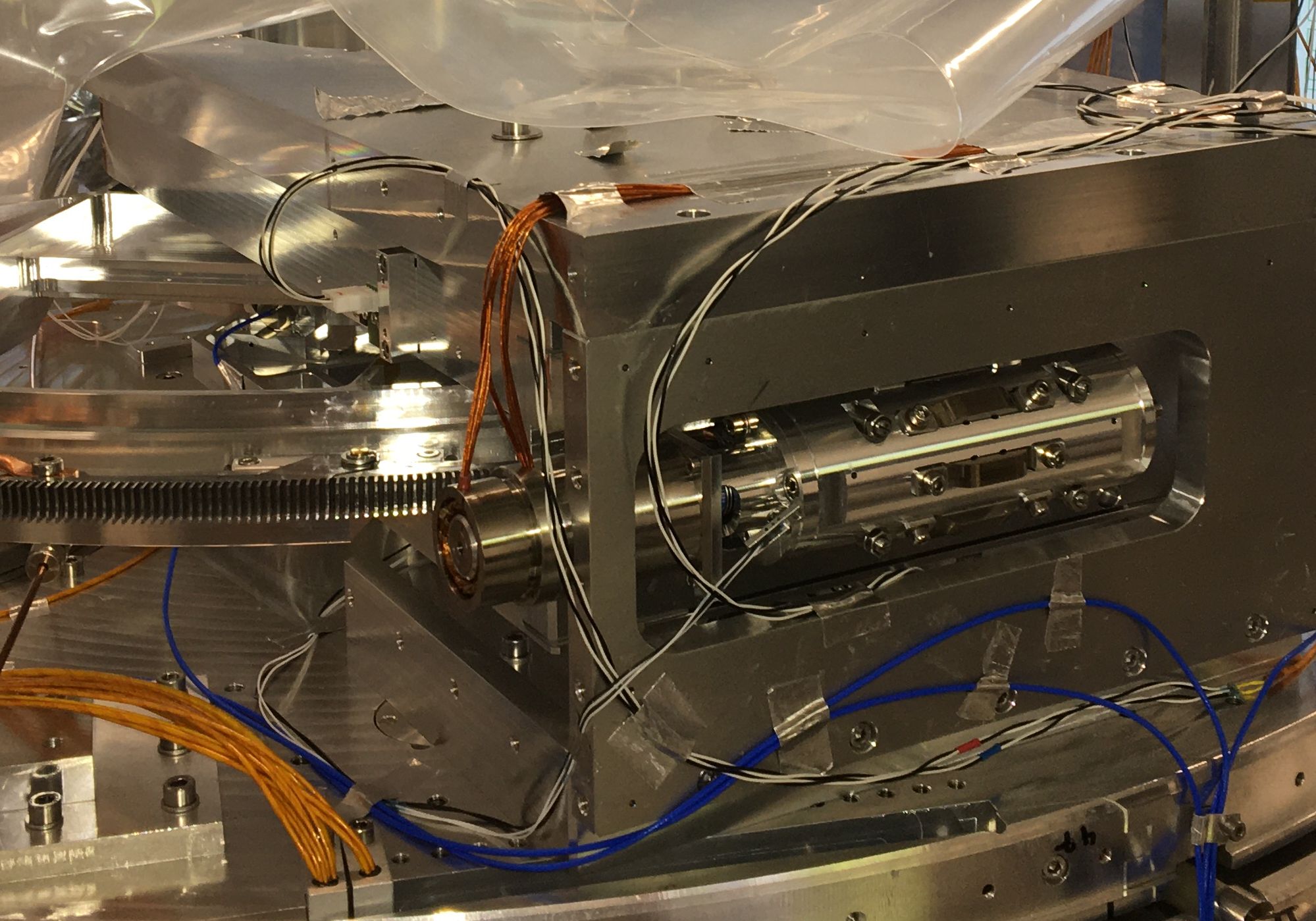 Cryogenic test of the magnetically coupled worm gear drive |
|
Technology
Development: Cryogenic Active Thermal Switch
Cryogenic operation of large mechanisms has a particular issue upon cool down or warm up: mostly weak thermal coupling over bearings can lead to very long cooling durations. This issue is of particular interest for delicate infrared optical instruments, avoiding differential temperatures in the cool down process. We have developed a system of a thermal switch, to contact the unit upon cool down, and disconnect upon need. The contact device is is designed such, that it can control the heat flow to the desired level upon demand. A Patent application has been filed on this active thermal switch. |
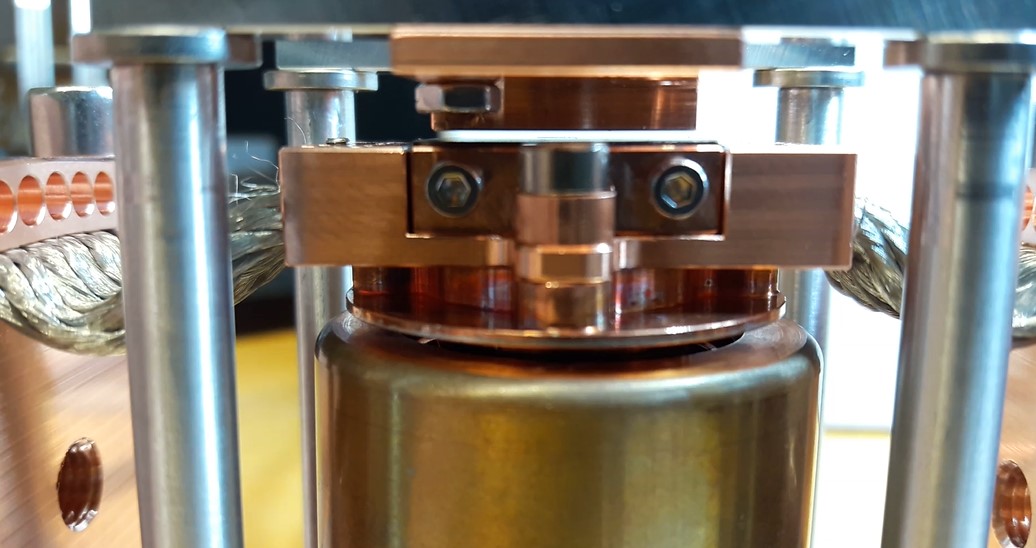 Cryogenic Active Thermal Switch |
|
Technology Development:
In situ cryogenic MOS
mask generation
multi object spectroscopy allows to measure the spectrum of many objects in the telescopes field of view at the same time. To select the objects from which to measure the spectrum, requires a selector mask in the instrument. Since infrared spectrographs are operated under vacuum at cryogenic temperatures, mask handling and exchange is rather complex. We have been developing novel methods for in-situ mask generation. Based on laser ablation of thin films at 77K or thin foil cutting and handling. This will facilitate infrared MOS instrument operation greatly and enable advanced observing programs. |
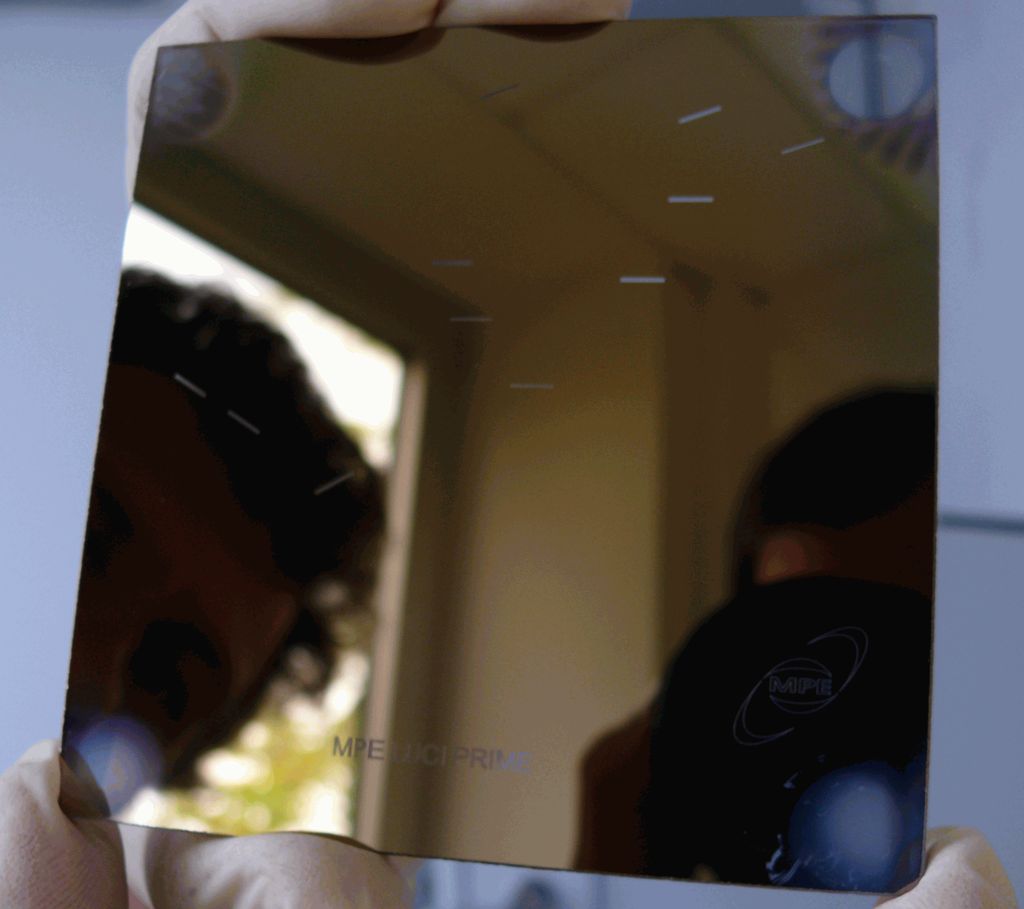 Gold coated mask with custom laser cut slits |
|
GRAVITY: combining the light from all four UT telescopes at the VLT interferometrically allows to adress fundamental scientific questions. Gravity will measure the position of flares in the galactic center with µarcsec precision, thus probing space time in the vicinity of a super massive black hole. The image shows 1908nm laser fringes at the secondary for the path length metrology with nm precission. |
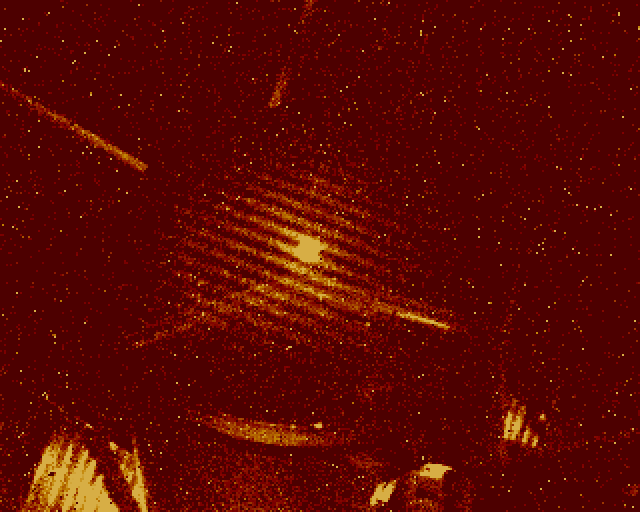 |
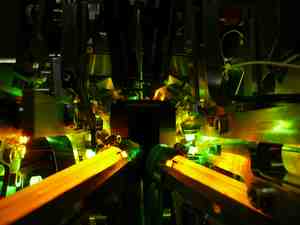 |
PARSEC: the first laser system for the VLT Laser Guide Star Facility. Being developed by me in the framework of my PhD thesis, it consisted of a master laser - power amplifier system, based on dye technology. It utilized a modified commercial ring dye laser as master, delivering ~2W of single mode, single frequency light. This seed light was injected into a specivicly resonant, a-planar laser cavity, containing two high speed dye laser jets, both bi-directionally pumped by the 532nm solid state lasers. Resonant phase locking of the cw laser amplifier was performed with a novel intra-cavity phase shifting method invented by me, extending the Hänsch-Couillaud lock for the use in injection seeded amplifiers. With 5 green lasers operating at 532nm pumping the system, the laser system routinely delivered 13W single frequency cw laser light at the Sodium D2 transition and has shown a maximum output power of 24W. At its time this laser system was the worldwide most powerful and efficient cw laser system at single mode and single frequency at 589nm. The LGSF has been in operation at Paranal for several years. |
|
ALFA one of the first astronomical adaptive optics systems with laser guide star. Being located at the Calar Alto observatory in Spain, ALFA has been using a 3W cw dye laser to create a laser guide star in the earth sodium layer. My personal starting point into high resolution astrophysics, developing a laser characterization system within my diploma thesis work, and joining the world of a fast evolving technology. |
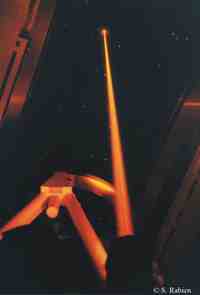 |